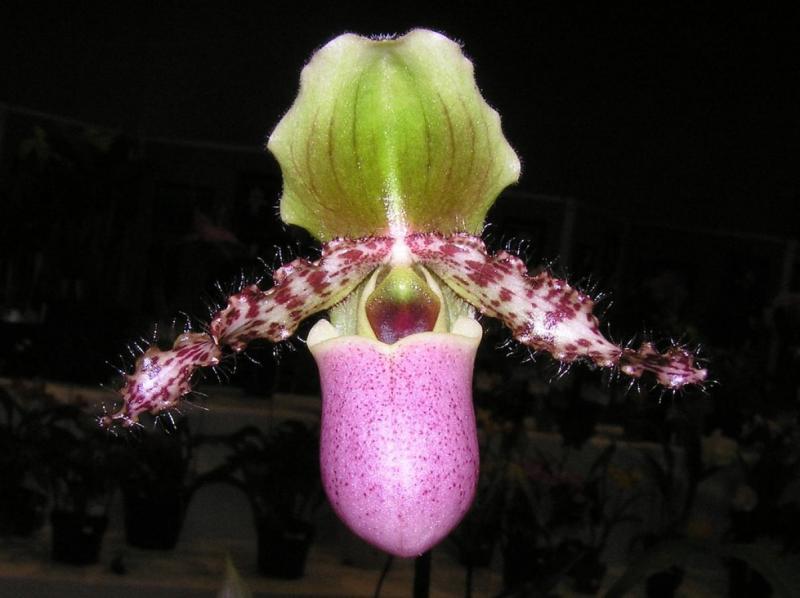Paphiopedilum glaucophyllum
Also known as: The Shiny Green Leaf Paphiopedilum or Paphiopedilum glaucophyllum f. flavoviride Paphiopedilum moquetteanum f. flavoviride Paphiopedilum glaucophyllum var.moquetteanum Paphiopedilum glaucophyllum h.f. aureum Paphiopedilum glaucophyllum h.v. moquetteanum h.f. tipo Paphiopedilum glaucophyllum h.v. moquetianum Paphiopedilum glaucophyllum h.v. moquetteanum h.f. flavoviride Paphiopedilum victoria-regina ssp. glaucophyllum Paphiopedilum glaucophyllum ssp. glaucophyllum Paphiopedilum glaucophyllum ssp. moquetteanum Paphiopedilum glaucophyllum h.v. giganteum Paphiopedilum glaucophyllum h.v. moquettianum Cordula glaucophylla in the subfamily: Cypripedioideae
General Information
The Shiny Green Leaf Paphiopedilum is a small warm to hot growing terrestrial orchid belonging to the sub family Cypripedioideae.
Plant Description
Grows to 40-60cm. Each new growth has numerous erect elliptic, oblong shaped leaves that grow to 4.5-30cm long
Substrate(s)
- Coarse
Care Notes
These orchids grow on the forest floor so are used to rich soil containing plenty of organic matter that is always moist (but not always wet), and prefer constant conditions in terms of humidity, temperature and water supply. They may not be as forgiving as epiphytes in regards to sudden changes in growing conditions so it is wise to ease them into new conditions over a the space of a few days, and repot as infrequently as possible.
Keep an eye on the plants condition regularly as they can decline suddenly if the conditions are not just right. It is more important to keep water supply constant rather than frequent - overwatering often causes rot which can quickly set in, especially in warmer conditions.
These can be grown in shady, moist areas in the garden, supplied they have protection from abrupt changes caused by the elements, e.g. dry winds, frost etc. Being grown around companion plants such as ferns and bromeliads will help build and retain the humidity they require throughout the year.
Climate
Grows at low elevations. Rainfall ranges from 25mm to 353mm per day, heaviest in July and lightest in February. Humidity ranges from 69% to 82%, highest in June and lowest in March. Temperature ranges from 18C to 29C, highest in April (20C to 29C) and lowest in January (18C to 27C).
Watering
These orchids prefer a wet-dry cycle between waterings, they should be watered frequently but only when the moisture is approaching dryness, where the pot feels light and/or the media looks dry. Keep an eye on mounted orchids in warm weather as they may dehydrate quickly.
Fertiliser
These orchids do not need to be regularly fertilised and roots may be sensitive to salt build-up, dying back and therefore impairing the plants growth or even killing it.
If fertilising, use half to quarter of the recommended amount of fertiliser. If they receive fertiliser as part of a collection, be sure to flush out the pots regularly with fresh water and monitor the roots by checking how much resistance is given by the plant when nudged in its pot or mount. If the plant becomes wobbly or loose, repot in fresh mix or rinse the media/mount thoroughly and do not fertilise for at least 3 months.
Be sure to flush out excess fertiliser by running water through the media regularly year round. Use a high Nitrogen fertiliser during Spring. Use a high Phosphorous fertiliser year round.Potting
Due to the growth nature of these plants they are best mounted onto cork, tree fern slabs, or even trees if the climate suits. Water regularly especially in hot weather.
This plant does well mounted. Repotting is best done annually.




















